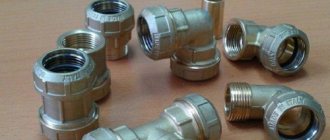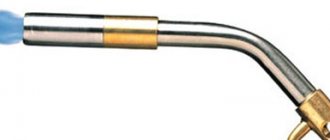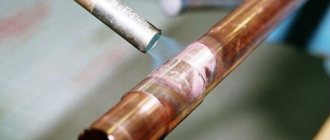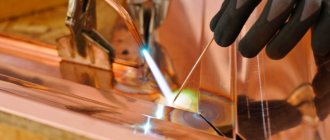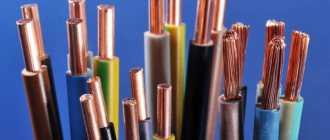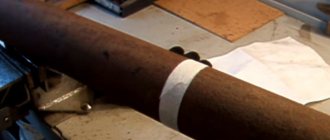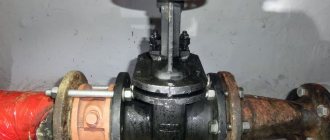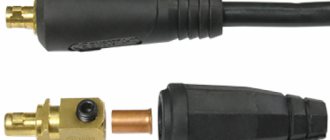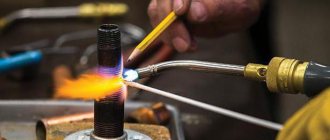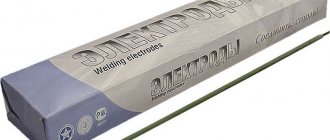There is a lot of debate about the advisability of creating and operating a water supply system from copper pipes in domestic conditions. Supporters and opponents voice very compelling arguments in their favor. However, it is worth taking a closer look at the experience of the “old lady” of Europe - copper water pipes installed back in the 70-80s of the last century are still working today. This is due to the presence of many advantages in these products.
Copper pipes are an excellent option for a reliable and durable plumbing system.
COPPER PIPE AND ITS ADVANTAGES
Copper pipe has a huge number of advantages that allow you to make a choice in its favor.
In particular, copper is a lightweight material that bends well, so finished copper pipes are easy to transport, and they are much easier to install than analogues made from denser materials. The only drawback of such pipes is the price of copper pipes, which seems to many to be somewhat overpriced. However, the quality and durability of copper pipes leave no doubt that it is better to give preference to them. Of course, an annealed copper pipe will justify the money spent on it and will last for many years.
PARAMETERS OF COPPER PIPES
Before choosing copper pipes in St. Petersburg for a heating or plumbing system, you should familiarize yourself with the basic parameters of this material. Among the main parameters of copper that affect the efficiency of use for heating, it is worth highlighting thermal conductivity.
Copper pipes often have a high thermal conductivity coefficient. However, with additional thermal insulation, the heat loss of hot water circulating through them will be significantly lower. In addition, when deciding to buy a copper pipe, it is worth knowing that the melting point of this material is about 1000 degrees, and accordingly, the hottest water can circulate through such pipes.
It will be quite interesting to know that an annealed copper pipe has a density of about 9-10 g/cm3. This indicator plays a big role when installing a pipeline, since pipes with a lower density are much easier to install. It is important to understand that the price of a copper pipe fully corresponds to its quality, and by paying initially for a copper pipeline, in return you get many benefits.
COPPER PIPE FOR WATER PIPING
You can buy a copper pipe for water supply, as this material has anti-corrosion properties and is not affected by rust. Also, due to the fact that the inner surface of the pipes is completely smooth, various deposits do not accumulate on it.
In addition, the annealed copper pipe does not promote the growth of bacteria. Due to this, copper pipes can be used for drinking water supply, which is why the price of a copper pipe is slightly higher than others. If you plan to install copper pipes for a regular water supply with chlorinated water, you do not have to worry that the high chlorine content will begin to damage the structure of the copper over time.
Regulatory requirements according to GOST
External parameters, mechanical characteristics, alloy composition, assortment and marking designations are regulated by two main provisions: GOST 617-2006 (General purpose copper pipes) and GOST 11383-75 . European-made products meet the EN-1057 standard of 2006 .
Set of requirements:
- The internal and external surface of the pipe should not be contaminated to prevent inspection of the products. The presence of delaminations, rust, cracks and cavities on the pipe “sleeve” is unacceptable.
- A dent up to 0.25 mm deep is acceptable. The quantity limit is no more than two per linear meter and no more than 10% of defective products per delivery lot.
- No burrs at the ends of the pipes. The normalized cutting bevel for specimens with a diameter of up to 20 mm is 2 mm, for products with a cross-section of 20-170 mm - 3-5 mm, respectively, for pipe fittings with a diameter of 170 mm or more, a bevel of 7 mm is acceptable.
- For coils and soft pipes, ovality is not limited.
Each coil or batch of pipe sections must be accompanied by a packing slip and information label.
Mandatory data from the accompanying document: trademark of the enterprise, legal address of the manufacturer, marking of the composition and dimensions of pipes, batch number, production date, technical control stamp
COPPER PIPES IN SPB FOR HEATING SYSTEMS
Modern copper pipes in St. Petersburg are very popular for heating systems.
An important factor is the aesthetic appearance of this material, which allows you not to hide such pipes. In addition, the copper pipe is resistant to high temperatures. Also, copper pipe is known for its thermal conductivity.
Accordingly, buying a copper pipe for the heating system will be an excellent solution, since the heat transfer will be maximum. If a copper pipe suits your price, it is worth considering that such pipes are prohibited from being combined with aluminum radiators. For heating systems, it is very important that the annealed copper pipe is impermeable to oxygen, which means that by purchasing copper pipes in St. Petersburg, you can avoid such a common problem as air locks.
Copper is a valuable metal. It is used to create works of art, various objects and even building materials.
Copper building materials include pipes. Copper plumbing pipes are a great choice, if you can afford them, of course.
Copper pipes of different diameters
They have a lot of advantages. What are these advantages and how do you generally work with copper pipes for water supply? Now we will tell you everything.
Scope of application
Copper pipes have many advantages, which has made it possible to use them in various fields. So, the products are used:
- in heating and water supply systems;
- in high pressure systems for oil supply;
- for transporting compressed air and gas;
- as freon tubes in refrigeration systems;
- for condensate drainage;
- in fuel systems;
- in air conditioning systems;
- for connecting various equipment.
Features and Properties
In our area, copper pipes are a rather rare, one might even say exotic, choice. Copper is used only in situations where other options are not suitable, or if the owner insists on it. In Europe, on the contrary, copper pipelines were used almost everywhere, and are still used today.
In fact, copper has both many absolutely real advantages and several rather significant disadvantages. It cannot be said that this material is an ideal candidate for the assembly and installation of a water supply system. But one cannot deny all of its many positive properties.
It is not for nothing that in Europe some copper pipes for water supply, installed at the beginning of the last century, are still preserved. And even more than that, they are used for their intended purpose, without any comments from the owners.
Pros of copper pipes
Let's start with the positives. Moreover, there are really more of them and they are worth paying attention to.
Main advantages:
- durability; metal does not react to external influences, does not corrode; pipes have antibacterial properties; smooth wall surface; attractive appearance; do not react to temperature changes; good strength.
This is not everything, but the main properties that you should pay attention to. Let's look at them in more detail.
Only the lazy did not talk about the durability of copper. Indeed, it is difficult to find material that is more successful in this regard. High-quality plastic can also last for tens or even hundreds of years.
But what condition he will be in after this period is a big question. Most likely, it will no longer be possible to use it for its intended purpose.
Lack of corrosion is the second most important point. It is thanks to its exceptional durability and zero reaction to external influences that copper has gained its recognition.
Many old houses still have copper pipes. Moreover, their condition is better than in some steel water supply systems, with pipes more than 20-30 years old.
Copper pipes and fittings for them
There are actually legends about the antibacterial properties of copper pipes for water supply.
However, the fact remains that bacteria practically do not linger on the walls of copper pipes, which means the outlet water will be cleaner. Is it worth it to spend on purchasing and installing pipes? You decide.
A smooth surface affects whether the water supply will become clogged. The more heterogeneous the walls inside the pipes, the greater the chance of fatty deposits appearing on them, and therefore increasing the likelihood of blockage.
The lack of reaction to temperature favorably elevates copper over plastic pipes. Plastic is also durable, does not rot, and is also much cheaper, but at high temperatures it expands greatly, and with a sharp change in the overall temperature in the system it can even burst.
The copper pipe can withstand carrier temperatures of +500 degrees Celsius.
And this is far from the limit. As for good strength and appearance, everything is clear here. The strength of copper, of course, is not the same as that of steel, but it is better than that of plastic.
Cons of copper pipes
After such a vivid and detailed description of all the benefits that copper pipes give you, it may seem that there is no alternative.
However, it is not. There are also many not-so-pleasant aspects of copper products that should also be taken into account. It is they who make the choice in favor of this metal so ambiguous.
The disadvantages include:
- high price; installation is more difficult; poor reaction to contact with some other metals; electrical conductivity.
The first thing that deters me is the price.
Yes, the price of copper products is indeed very high. If we consider the installation and purchase of pipelines from copper in the context of estimates for general repairs, then the numbers will not seem entirely astronomical. But if you compare it with its closest analogues, the difference will be noticeable.
Adapter fitting soldered to the pipe
A copper pipeline costs tens of times more than a plastic one, and several times more than a steel one. Moreover, the price and complicated installation increases.
Installation of pipes of this type is complicated by the capriciousness of copper. It cannot be welded with a conventional machine; it can only be soldered using low-temperature soldering. It takes longer to tinker with it; it’s difficult to do it with your own hands.
In addition, the third point makes itself felt - oxidation of copper. Copper products go well with bronze and brass, but low-quality steel or aluminum are not the best partners. It is not advisable to purchase fittings for a water supply system from these materials.
As for electrical conductivity, it rarely appears, but one cannot forget about it. Correct installation will protect you from problems with electrical conductivity, since all elements of the system will be isolated from external sources.
Types of pipes
Those wishing to buy copper pipes for water supply should pay attention to their type. There are pipes:
Solid samples are made from stronger copper, it is practically not deformed and is really expensive. This option is appropriate when assembling the central channels of a water supply system, as well as in the case when it is planned to transport media under high pressure in the pipe.
By and large, they are high-pressure pipes, as they have thickened walls and an increased strength class.
The second option is better suited for creating domestic water supply distribution. Soft copper pipes have thin walls and are easily deformed. You can even bend a small-diameter sample yourself without using a pipe bender, which plumbers often use.
They are cheaper and easier to use, but they are inferior to competitors in terms of strength characteristics.
Explanation of designations for pipe products
Basic characteristics are grouped in pipe markings.
Conditional indicators are prescribed according to a clearly defined scheme:
- Manufacturing technology : D – cold-deformed, G – pressing.
- Cross-section geometry : KR – round shape.
- Production accuracy indicator : N – within normal limits, P – increased accuracy regarding diameter/wall thickness, I – high accuracy regarding diameter, K – maximum accuracy regarding wall.
- Type of material by plasticity . In addition to the indicated abbreviations M/P/T (soft/semi-hard/hard pipe), the following product markings are used: L – soft with high elasticity, F – semi-hard with increased strength, H – hard with high strength.
- Dimensions – the value of the outer diameter/wall thickness.
- Length : ND and MD - unmeasured and measured pipelines, respectively, KD - rolled multiples of the measured one, BT - supplied in coils.
- Metal grade that determines the composition of the alloy.
- Special conditions : B - high accuracy in length, O - accuracy in curvature, P - regulated tensile standard, N - confirmed Vickers hardness, BU and BS - ordered and spiral winding of the coil, respectively.
Missing data is replaced by an "X".
Marking example: Pipe DKRPM 28/3 3000 M1 GOST 617-2006. The meaning of the designation is a round cold-deformed pipe with increased accuracy of wall dimensions (3 mm) and diameter (28 mm), soft, 3 m long, made of M1 alloy. The product complies with GOST standards
Pipe installation
Let's look at installation in more detail. Let us immediately note that working with copper is really more difficult, and you will have to use non-standard methods. But if you figure it out, you can do it yourself.
Moreover, in some places the installation of water supply systems is simplified for doing it yourself, since copper is quite easy to bend (if, of course, we are talking about samples with thin walls) and it weighs less.
Do-it-yourself pipe installation can be done in two ways:
- Soldering. Using fittings.
Both have their advantages and disadvantages. Soldering requires skill and special tools. A beginner, working with his own hands, will probably experience serious difficulties.
An example of a complex water supply installation consisting of copper pipes and brass fittings
Using fittings is much more convenient, but there are nuances here too. Installation is more expensive, and the result is not so reliable.
Pipeline development
Before directly assembling the pipes and installing the pipeline, it is necessary to develop a general diagram of the system, according to which you can calculate:
- the number of required pipes of a certain diameter;
- the number of fittings that will be installed at the branch of the system, at the points where pipes are bent, at the points where plumbing equipment is connected;
- quantity and location of installation of additional equipment (water heaters, pump, mixers, water taps, shut-off valves, and so on).
Country house plumbing system plan
A correctly drawn up diagram is the key to successful operation of the system. Therefore, it is more expedient to develop the scheme together with qualified specialists.
Using a soldering iron
Soldering copper is a delicate process. It differs from standard welding, largely because it uses slightly different tools.
To work you will need to have:
- a low-temperature torch (even an active gas can will do, but it’s more difficult to work with); solder for copper products; steel brush and calibrator.
These are the basic tools. Special oil also wouldn’t hurt, although you can do without it.
Before starting work, the pipe should be cleaned. This is done with your own hands, using a steel brush.
The task is to remove oxidation, foreign elements and everything that prevents soldering to the highest level. Clean both ends of the pipe, or the pipe and fitting. It all depends on the working conditions.
Then proceed directly to the connection. Using a torch, the ends of the pipes are heated, inserted into each other, and hot solder is passed along the joints.
The described process is probably familiar to radio amateurs.
And for good reason, because there really are a lot of similarities with soldering microcircuits. Only the tools are a little different. Then the pipe is left for a while so that the metal sets well.
Prices
The price of pipes depends on the amount of material used , that is, diameter and length.
The table shows the average cost in rubles per 1 meter.
| Diameter (mm) | 8 | 12 | 15 | 22 | 28 | 35 | 42 | 54 |
| unannealed | 175,00 | 200,00 | 250,00 | 400,00 | 500,00 | 650,00 | 900,00 | 1500,00 |
| annealed | 170,00 | 210,00 | 300,00 | 480,00 | 750,00 | — | — | — |
